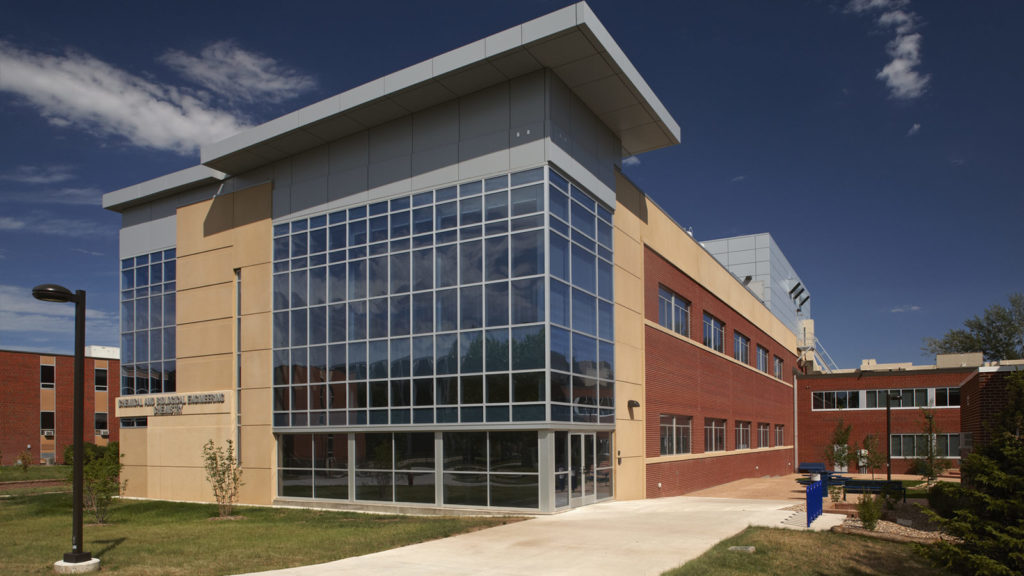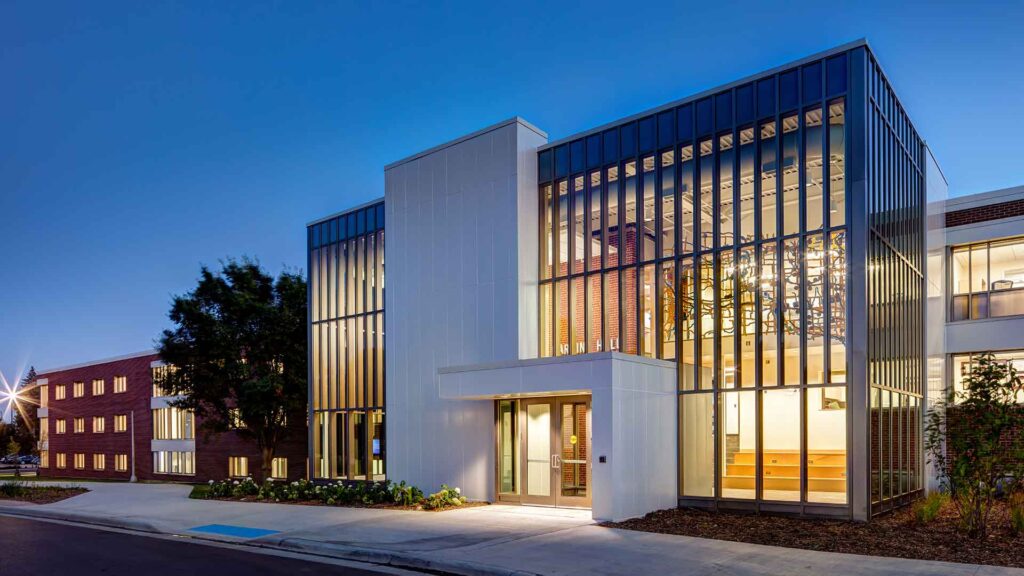Below is a portion of the required yearly Green Building Report provided by the Office of the State Engineer to the South Dakota Legislature. Within this report, we see the status of state building projects and their compliance to Senate Bill 188 in 2008.
Note: items in a portion of the report below may be updated per Senate Bill 134. This bill was brought forward this legislative session by the Board of Regents to amend SB 188. Please see the AIA South Dakota Advocacy in Pierre 2021 post for more information on AIA South Dakota’s involvement on this bill. The advocacy committee worked tirelessly to maintain a level of verification within this bill while still addressing the concerns brought forward with the initial changes.
High Performance Green Buildings
State Building Projects Designed to Higher Standard
Background
Designing buildings to be resource-efficient can save energy, water, reduce waste and pollution, thereby reducing operating costs, improving the indoor quality for occupants, and benefit the environment.
Recognizing the opportunity to reduce costs, save resources, and make the indoor and outdoor environment better, the State of South Dakota began its green building initiative in 2008.
Green Building in State Law
Senate Bill 188 was introduced at the request of the Office of the Governor during the 2008 Legislative Session. As amended, the bill was passed by the Legislature and signed into law.
The new laws, codified as SDCL §§ 5-14-32 through 36, established requirements that any new construction or renovation of a state building with HVAC (heating, ventilation, and air conditioning systems) that has a cost of $500,000 or more or includes 5,000 square feet or more of space shall meet or exceed a high-performance green building standard.
The law also recognizes that meeting a high-performance green building standard may not
always be feasible and allows the requirement to be waived by the Office of the State Engineer. The circumstances which allow a waiver are described in the Building Project Waivers section of this report.
The law provides the option to select from three rating systems to meet the high-performance green building requirement:
1) A silver standard rating under the USGBC’s Leadership in Energy and Environmental
Design (LEED) rating system; or
2) A two globe rating under the Green Building Initiative’s Green Globes rating system; or
3) A comparable numeric rating under a certification program recognized by the American
National Standards Institute.
Administrative rules detailing the steps necessary to certify a project as a high performance building are found in ARSD Chapter 10:09:02.
House Bill 1011 was introduced in the 2010 Legislative Session on behalf of the Bureau of
Administration to update the version of LEED referenced in SDCL 5-14-32 to the current version.
About LEED
LEED – Leadership in Energy and Environmental Design – is a voluntary rating system published by the non-profit organization United States Green Building Council (USGBC) that provides a framework for the design, construction and operation of green buildings.i
LEED is an internationally recognized certification system that provides third-party verification that a building uses strategies to improve performance in key categories of: site sustainability, water efficiency, energy and atmosphere, materials and resources, indoor environmental quality, and innovation in design.
Credits within each category are earned for each building project, and the amount of credit points earned defines the certification level achieved. A building project must satisfy all prerequisites and earn a minimum number of points to be certified. There are four levels of certification possible: Certified, Silver, Gold, and Platinum.
LEED-certified buildings are designed to:
1) Lower operating costs and increase asset value;
2) Conserve energy and water;
3) Reduce waste sent to landfills; and
4) Be healthier and safer for occupants;
Annual Report
SDCL § 5-14-37 requires this annual report to the Legislature, including a list of state building projects granted a waiver or that failed to achieve a high performance green building standard.
High Performance Green Building Projects
Certification Earned in CY2020

- SDSMT Chemical and Biological Engineering + Chemistry LEED Silver
- SDSMT Wellness Center LEED Silver
- SD School for the Blind and Visually Impaired LEED Silver

- SDSU Harding Hall LEED Gold
- DSU Madison Cyber Labs LEED Silver
- NSU Science Center LEED Silver

- SDSU Wellness Center LEED Silver

- SDSU American Indian Student Center LEED Gold
- SDSU Animal Disease Research Diagnostic Lab LEED Silver
Allison Dvorak, AIA, CPHC, is a member of the AIA South Dakota Board of Directors, liaison to the Emerging Professionals and Communication committees, and an architect in Sioux Falls. She received her M.Arch from North Dakota State University and continues to develop her Master’s thesis of researching and implementing design theories focused on human centered design through speaking engagements, design practice, and one-on-one client education. Allison lives in Sioux Falls with her husband, son and daughter.



One Reply to “South Dakota OSE Green Building Report – CY2020”